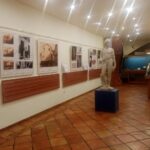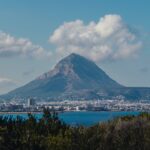Tucked away on the Spanish coastline, amidst the modern hum of a thriving beach town, Oliva holds secrets of the past within its soil. Its archaeological sites are silent storytellers, providing a unique window into the ancient civilizations that once flourished here. This 1000-word article takes you on a journey through time, exploring the rich tapestry of history unearthed in Oliva’s archaeological sites.
A Walk Through Time
The history of Oliva is as complex as it is fascinating, marked by the comings and goings of various civilizations including the Iberians, Phoenicians, Romans, and Moors. Each of these cultures left behind remnants of their existence, many of which lie buried beneath the town and its surroundings, waiting for the careful hands of archaeologists to bring them to light.
The Iberian Legacy
Oliva’s archaeological journey often begins with the Iberians, an ancient group of tribes that settled in the eastern and southern coasts of the Iberian Peninsula. The Santa Anna Hill is one of the sites where evidence of their presence has been found. Here, pottery shards, tools, and fragments of the Iberians’ daily life have been discovered, offering a glimpse into their society and customs. These artifacts suggest that Oliva was once a hub of activity, with a history stretching back well before the Roman conquest.

Roman Footprints
The Romans, known for their expansive empire that stretched across Europe, also left their mark on Oliva. The Roman site known as the “Casa de l’Ensenyança” reveals a past rich with trade and agricultural development. The discovery of amphorae (large ceramic vessels) indicates that Oliva was a part of a vast trading network in which olive oil, wine, and other goods were exchanged across the Mediterranean.
Islamic Influences
Following the Romans, the Moors took over, leaving behind an indelible influence on Oliva’s cultural and architectural heritage. At the site of the “Raval de Santa Anna,” the remains of Islamic buildings and ceramics tell the story of a flourishing medieval society. This area provides a rare look into the Moorish period, which shaped the region’s agriculture, language, and way of life for centuries.
Christian Conquests and Beyond
After the Reconquista, when the Christian monarchs reclaimed Spain from Islamic rule, Oliva witnessed a transformation in its social and urban landscapes. Archaeological digs in the town center have uncovered structures that date back to this tumultuous period, including parts of the old Christian wall that once fortified the town.
Centuries-Old Necropolis
On the outskirts of Oliva, archaeologists have unearthed a necropolis, a large, ancient cemetery indicative of the town’s demographic history. The careful study of these burial sites provides invaluable information about the health, diet, and mortality of Oliva’s past populations, contributing to a better understanding of the historical life cycles of its inhabitants.
Uncovering the Past: The Archaeological Process
The archaeological process in Oliva is meticulous and multidisciplinary, involving not only excavation but also conservation and research. Each layer of soil removed can unveil artifacts that alter the historical narrative, providing new insights into the economic, social, and political aspects of ancient Oliva. The town’s commitment to preserving these artifacts ensures that they are not only studied but also celebrated as part of its rich heritage.
Connecting with History: Museums and Exhibits
Oliva takes pride in showcasing its discoveries at the local Archaeological Museum. The museum curates a selection of the most significant finds from the area’s excavations, allowing visitors to connect with the past through a collection of relics that range from domestic utensils to pieces of ancient artistry.
Education and Engagement
Beyond preservation, Oliva invests in education, understanding that an informed community is the best custodian of its heritage. Workshops, school visits, and public talks are regularly organized to engage both locals and tourists in the archaeological process and findings. These initiatives help foster a sense of collective ownership and pride in Oliva’s historical landscape.

Archaeotourism: A Sustainable Approach
Oliva has embraced archaeotourism, inviting visitors to explore its ancient sites in a sustainable manner. Walking tours, guided by experts, offer an immersive experience while ensuring that the impact on the sites is minimized. This form of tourism not only educates but also contributes to the local economy, providing a model for how history can be leveraged for community development.
The Future of Oliva’s Past
As technology advances, so do the methods used in archaeology. Oliva is at the forefront of employing non-invasive techniques such as ground-penetrating radar and 3D mapping, which allow for the exploration of what lies beneath without disturbing the peace of the past. These modern approaches promise a future where more of Oliva’s history can be discovered and preserved.





